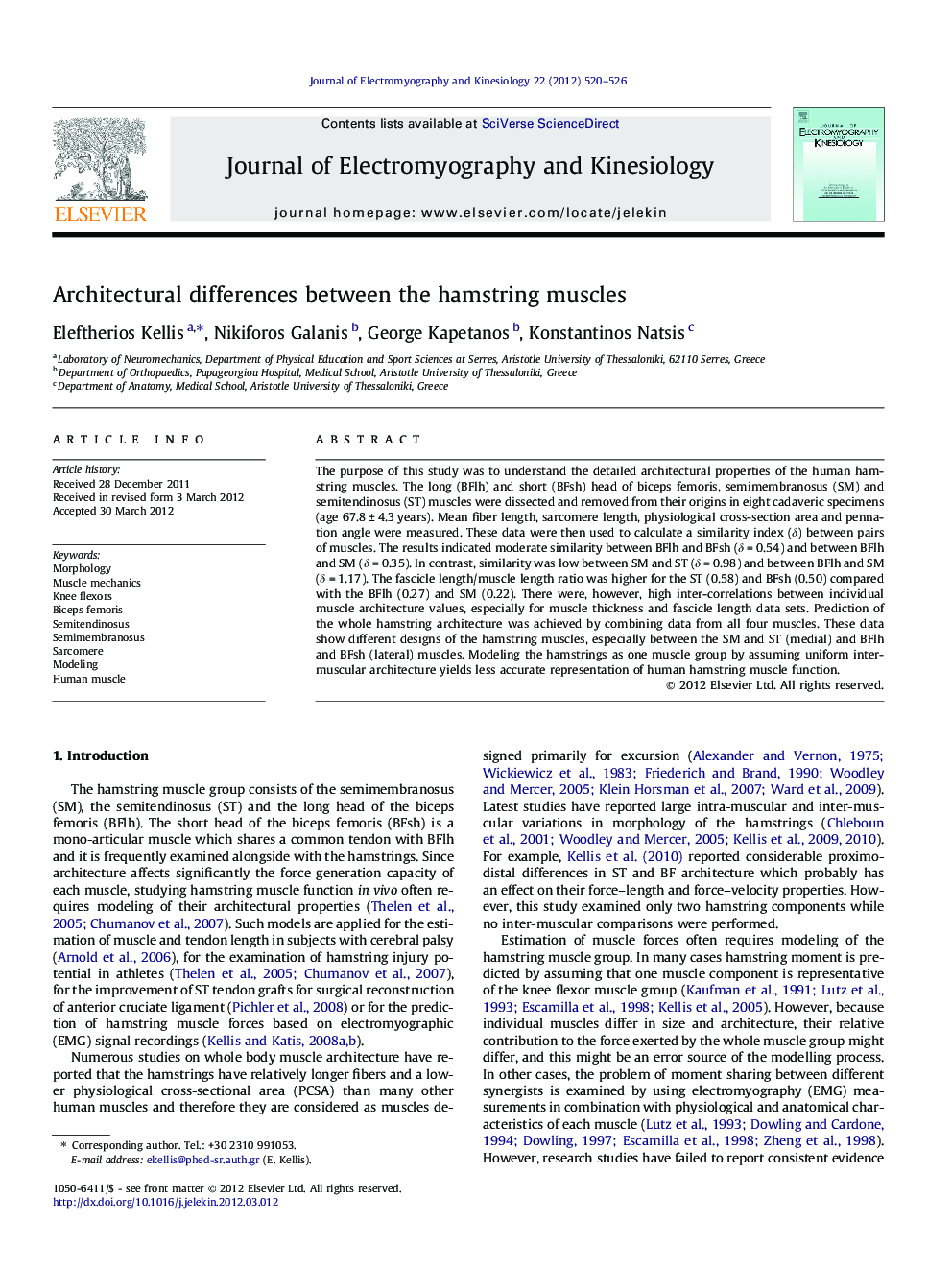| کد مقاله | کد نشریه | سال انتشار | مقاله انگلیسی | نسخه تمام متن |
|---|---|---|---|---|
| 4064896 | 1266230 | 2012 | 7 صفحه PDF | دانلود رایگان |

The purpose of this study was to understand the detailed architectural properties of the human hamstring muscles. The long (BFlh) and short (BFsh) head of biceps femoris, semimembranosus (SM) and semitendinosus (ST) muscles were dissected and removed from their origins in eight cadaveric specimens (age 67.8 ± 4.3 years). Mean fiber length, sarcomere length, physiological cross-section area and pennation angle were measured. These data were then used to calculate a similarity index (δ) between pairs of muscles. The results indicated moderate similarity between BFlh and BFsh (δ = 0.54) and between BFlh and SM (δ = 0.35). In contrast, similarity was low between SM and ST (δ = 0.98) and between BFlh and SM (δ = 1.17). The fascicle length/muscle length ratio was higher for the ST (0.58) and BFsh (0.50) compared with the BFlh (0.27) and SM (0.22). There were, however, high inter-correlations between individual muscle architecture values, especially for muscle thickness and fascicle length data sets. Prediction of the whole hamstring architecture was achieved by combining data from all four muscles. These data show different designs of the hamstring muscles, especially between the SM and ST (medial) and BFlh and BFsh (lateral) muscles. Modeling the hamstrings as one muscle group by assuming uniform inter-muscular architecture yields less accurate representation of human hamstring muscle function.
Journal: Journal of Electromyography and Kinesiology - Volume 22, Issue 4, August 2012, Pages 520–526